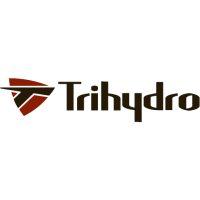Per- and polyfluoroalkyl substances (PFAS) may be the cause célèbre, but several other emerging contaminants are attracting attention in their own right. Join our webinar to gain insights into how emerging contaminants are identified, evaluated, and prioritized for regulation. Several under-the-radar emerging contaminants will be discussed, including microplastics, 6PPD-Q (a tire anti-degradation agent), sulfolane, ethylene oxide, and others.
We will also discuss chemicals that have been on the emerging contaminant treadmill for years, like 1,4-dioxane. Our speakers will summarize the current and expected regulatory status, providing you with actionable knowledge to stay ahead of emerging contaminant challenges.
.tmb-svcscrsl.png?sfvrsn=25f7436e_1)
Webinar takeaways:
- How a chemical becomes a contaminant of emerging concern: When evaluating emerging contaminants, iterative data collection and evaluation ultimately lead to (a) regulations, (b) continued monitoring for additional evaluation, or (c) no action.
- Spotlights on key emerging contaminants: Learn about microplastics, 6PPD-Q, sulfolane, ethylene oxide, and more.
Meet the speakers:
Mitch Olson, PhD, PE, Emerging Contaminants Director, Trihydro
Mitch is a professional engineer with 23 years of experience in academia and consulting. Before joining Trihydro, he worked for 12 years as a research associate/scientist in the Department of Civil and Environmental Engineering at Colorado State University (CSU). Mitch leads Trihydro’s PFAS program and supports PFAS-related initiatives throughout the company. He develops and presents PFAS training materials internally and for clients, and he leads a PFAS sampling program that includes standard operating procedures and staff training. Mitch is an active member of the Interstate Technology Regulatory Council (ITRC) PFAS team, where he co-leads the training subgroup. He routinely participates in webinars, panel discussions, and technical presentations addressing environmental challenges involving chlorinated solvents, hydrocarbons, and PFAS.
Kyle McDonald, CES, Project Scientist, Trihydro
Kyle is an experienced environmental scientist with a diverse background in the environmental services industry. Kyle is proficient in environmental data management; analytical laboratory relations; data quality evaluation; United States Environmental Protection Agency (USEPA) National Functional Guidelines; environmental data defensibility; in situ groundwater remediation [in situ bioremediation (ISB), in situ chemical reduction (ISCR), and in situ chemical oxidation (ISCO)]; Resource Conservation and Recovery Act (RCRA) compliance, permitting, corrective action, and closure; Phase I and Phase II Environmental Site Investigations; and a variety of field methodologies for environmental media sampling including soil, groundwater, and soil gas.
Fritz Krembs, PE, PG, Senior Engineer, Trihydro
Fritz has 20 years of experience in environmental remediation, working with private and government clients on site investigations, remediation alternatives assessments, remediation system design, and construction oversight. Fritz is Trihydro’s subject matter expert on 1,4-dioxane as is a remediation trainer on the ITRC 1,4-dioxane team. He has extensive field experience, including site characterization and design, remediation implementation and construction, performance monitoring and documentation of ISCO and ISB projects. Fritz’s expertise includes conceptual site model (CSM) development and evaluation; remediation technology selection, design, and implementation; and remediation hydraulics.





.tmb-svcscrsl.png?sfvrsn=25f7436e_1)
